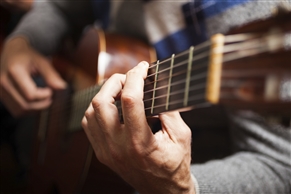Child Safety Week 2017: Avoiding the dangers in your home
Road safety is uppermost among parental concerns, but the home is less likely to be seen as a potential source of danger for children.
Yet every year an average of 60 children aged under five in England die from injuries suffered in and around the home, compared with about seven who die on the roads.
Cars are an obvious danger, yet our supposedly safe homes are littered with potentially dangerous items and places.
To mark Child Safety Week - Monday, June to Sunday, June 11 - the Child Accident Prevention Trust has highlighted some of the hidden and not-so-hidden dangers in the home for under-fives.
BURNS AND SCALDS
Burns and scalds are often linked to exploratory behaviour as a child's mobility increases; six toddlers are admitted to hospital every day because they've been badly burned. Babies are also at high risk of serious burns because their skin is very thin.
The Trust warns that a cup of tea could be the most dangerous thing in your lounge, as any hot drink can scald a baby even 15 minutes after it's been made, and they can easily be knocked over or grabbed by little fingers.
As well as hot drinks, children can get nasty burns from ovens, kettles and saucepans in the kitchen. Young children can climb on chairs and counters and may often reach higher than you think.
Young children can find matches, cigarette lighters and candles fascinating, so keep them out of their reach and sight. Hair straighteners can still burn 15 minutes after they're unplugged. Store them away safely.
BATH TIME
Put cold water in children's baths before hot, and make sure the water's the right temperature by dipping your elbow into it. Babies can drown in just a few centimetres of water, so never leave them alone, not even in a bath seat, which is just for support and not a safety device.
BLIND CORDS
At least 30 children have died in the past 15 years after becoming entangled in blind cords. It's harder for children to free themselves if they get tangled, and they suffocate more easily when their necks are caught in looped cords or chains.
It can take just 15 seconds for a toddler to lose consciousness if their necks become tangled in a blind cord, and just two or three minutes for them to die.
The Trust advises parents to tie up blind cords out of reach of children, make sure there's no furniture nearby for them to climb on to gain access to them, and to replace the blinds with a safer cordless, concealed or tension cord variety.
NAPPY SACKS
Babies and toddlers can suffocate or choke on nappy sacks, so parents are advised not to keep them in prams, and to buy them in a roll.
ACCIDENTAL POISONING
Everyday painkillers and other medicines are the most common way for young children to be poisoned. Keep them out of their reach. Less obvious than medicines but just as dangerous to children are squeezable, brightly coloured liquitabs (used in washing machines and dishwashers). These are attractive to babies and small children, and the concentrated detergent can be harmful if swallowed. Keep them well out of reach and sight of children.
BUTTON BATTERIES
If a button battery - the small, round batteries found in lots of toys and gadgets - gets stuck in the gullet, it can burn a hole through the throat and lead to serious internal bleeding and death.
Batteries in children's toys are covered by safety regulations and should be enclosed by a screw and secured, but toys from markets or temporary shops may not follow safety regulations.
Keep products with batteries out of reach if the battery compartment isn't secured. Avoid toys from markets or temporary shops as they may not conform to safety regulations, and teach older children that button batteries are dangerous and not to play with them or give them to younger siblings.
BE VIGILANT
Trust chief executive Katrina Phillips warns that parents need to be vigilant and look at their home through the eyes of a child.
"Young children are hugely curious and they play with everyday products in ways manufacturers never intended," she says.
"Get down on your hands and knees for a child's-eye view of your home."
She points out that accidents can happen quickly and easily, possibly when parents are distracted.
"Parents tell us their home is the safest place for their child and they know what their child will do next," she says.
"But home hazards aren't always obvious and young children develop so quickly they can catch us out."
THREE OF THE BEST... Child safety aids
Dream Tubes Inflatable Bed Guards: Blow up these bed guards and pop them in the pockets of the specially designed soft white cotton sheet, creating a barrier to stop a child falling out of bed. Available in two sizes, Dream Tubes can be used on any standard cot bed or single bed. Suitable from 18 months to five years, www.hippychick.com, £34.99.
Hobbledehoo Active Child's Harness: A padded child harness designed particularly to support active children, with front and back grab handles, quick-release chest straps, a detachable leash and high-visibility reflective shoulder straps. Suitable from one to six years, www.hobbledehoo.com and Amazon, £20.
BeltUpp: An easy-to-use belt and buckle set that attaches to an existing car seat to stop children falling forwards or leaning to the side while in the car, helping keep them comfortable, safe and upright. Suitable from about four years, www.cheekyrascals.co.uk, £19.99.
GET INVOLVED
This year's Child Safety Week theme is Safe Children: Sharing is Caring, and the trust is asking people to share their experiences - not just about accidents, but the practical things they do to prevent them.
For more on child safety, visit www.capt.org.uk





